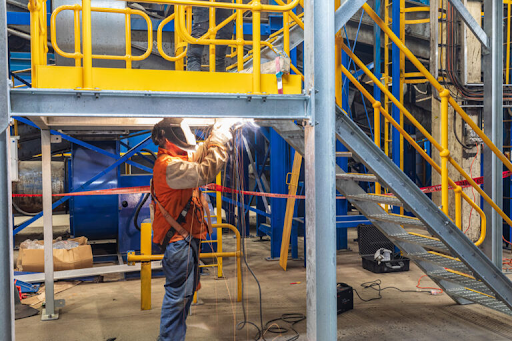In the ever-expanding landscape of global trade and commerce, efficient and adaptable storage solutions are essential. The rise of prefabricated warehouses is transforming the way businesses handle their storage needs. These innovative structures offer numerous advantages, from rapid construction to scalability, making them an indispensable asset in the world of global trade. In this article, we will delve into the concept of prefabricated warehouses, their contributions to global trade, and the factors driving their increasing popularity in the business world.
Exploring Prefabricated Warehouses
- Prefabrication vs. Traditional Warehousing: Prefabricated warehouses, also known as pre-engineered or prefab warehouses, differ from traditional warehousing in that they are constructed from pre-made components manufactured off-site and then assembled on the construction site. This streamlined process results in quicker construction and cost savings.
- Scalability and Customization: Prefabricated warehouses are highly scalable and customizable, allowing businesses to adapt to changing storage needs. They can range in size from small storage units to vast distribution centers and be tailored to suit specific requirements.
Contributions to Global Trade
- Efficient Supply Chain Management: In the era of global trade, a well-organized and efficient supply chain is paramount. Prefabricated warehouses offer a rapid and cost-effective solution for businesses to establish and expand their logistics networks, ensuring a smooth flow of goods from manufacturers to consumers.
- Adaptability to Market Dynamics: The flexibility of prefab warehouses allows businesses to swiftly respond to shifts in market demand. They can easily expand or contract their storage capacity as needed, reducing the risk of overstocking or understocking products.
- Global Reach: Prefabricated warehouses can be constructed in various locations, even in remote or underserved areas, to support global trade. This expansion of storage infrastructure enhances the ability to reach new markets and efficiently serve customers worldwide.
Factors Driving Popularity
- Speed of Construction: The rapid construction of prefab warehouses is a significant advantage. The pre-made components and efficient assembly process can cut construction time in half compared to traditional methods, allowing businesses to begin operations sooner.
- Cost-Effectiveness: Prefabricated warehouses are generally more cost-effective due to reduced labor, shorter construction timelines, and decreased material wastage. This financial efficiency appeals to businesses looking to optimize their budgets.
- Sustainability: Many prefabricated warehouses are designed with sustainability in mind. They can incorporate eco-friendly features such as energy-efficient lighting, insulation, and renewable energy sources, aligning with the global trend toward more environmentally responsible practices.
- Customization: The ability to customize prefab warehouses ensures that businesses can meet their unique storage and operational needs. This adaptability is essential in an ever-changing global trade landscape.
A Driving Force in Global Trade
Prefabricated warehouses are becoming a driving force in the world of global trade. They enable businesses to establish efficient supply chain networks, respond to market dynamics with agility, and expand their reach to new markets. Their quick construction, cost-effectiveness, and adaptability to sustainable practices have made them a valuable asset for businesses seeking to streamline their operations and enhance their global trade capabilities.
As the global trade environment continues to evolve, prefabricated warehouses are likely to play an increasingly pivotal role in shaping the future of commerce, facilitating smoother logistics, and accelerating the movement of goods across borders. They represent a dynamic and indispensable solution in the pursuit of success in the global trade arena.








